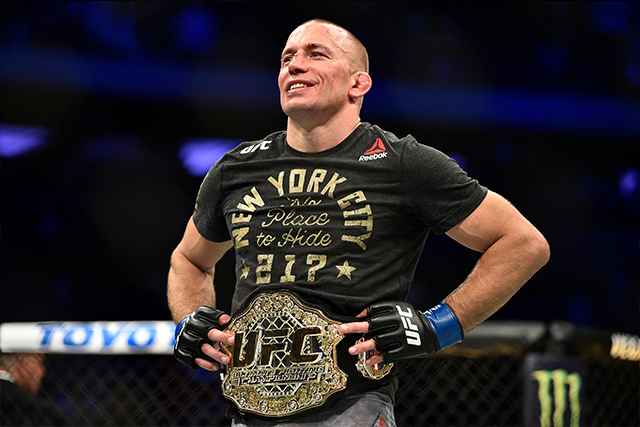Budo’s Best: Katsunori Kikuno
Budo's Best

Taro Irei/Sherdog.com
Ichigeki-hissatsu -- the “one-hit must-kill” in karate parlance -- is the philosophy to which Katsunori Kikuno subscribes and aspires.
Advertisement
This rhythm and these techniques make the 28-year-old lightweight one of Japan’s true chances for another national mixed martial arts hero.
Those who grew up watching films like “The Karate Kid” learned that
martial arts were about honor, discipline and self-defense.
However, MMA has radically altered these perceptions, instilling
its new modern values. In adapting martial arts for prizefighting,
the mysticism and arcane philosophies were stripped away for the
practical reality of what works in the cage.
Thus, it’s intriguing to see self-proclaimed traditional martial artists like Kikuno succeed, given his hope to prove karate’s viability in MMA as well as its strength as moral education. He is a stereotype of the silver screen martial artist. An adherent to the principles of budo, Kikuno is polite, thoughtful and ultimately mindful of propriety.
“What I noticed about him in particular was that he was very polite and respectful,” his trainer, UFC and Pride Fighting Championships veteran Tsuyoshi Kosaka, says. “He had a long budo background, was eager to learn and open to advice. That motivated me to teach him.”
Five years after a 23-year old Kikuno first walked through the Alliance-Square gym doors, he wears the Deep lightweight title and has three bouts in Dream. Kikuno shellacked Brazilian bomber Andre Amado at Dream 10 and followed with a competitive two rounds against top-five lightweight Eddie Alvarez at Dream 12 before submitting to an arm-triangle choke. He then rebounded at Dream 13, crushing UFC veteran Kuniyoshi Hironaka in the first round.
Like many fighters of his generation, Kikuno was inspired by Pride. From Kagoshima, in the far southwest tip of Japan, Kikuno set his sights on Tokyo. Serving as the overcrowded home of Japan’s creative, business and entertainment industries, Tokyo for most Japanese is currently the nation’s most significant city. Since MMA events and resources like gyms and fellow fighters are almost exclusively Tokyo-based, Kikuno had little choice but to make the long pilgrimage north to become a successful fighter by any measure.
After graduating from Tsurumaru High School in 2000, Kikuno split time working as a construction worker and training in Kyokushin. His goal was to save money and build up his skills for his eventual move to Tokyo. Soon after enrolling in the Kyokushinkai Kagoshima Matsui dojo, Kikuno became a live-in student in 2001. Kikuno’s dojo was also the home of Kyokushin world champion Hitoshi Kiyama, who had a profound influence on the budding fighter.
“Kiyama was a world champion, so there were things that I learned from him outside of just technique,” Kikuno says. “How do I live well, how do I train seriously and how do I shape my mind and heart for training and competition?”
More importantly, it was from Kiyama that Kikuno learned through observation his trademark crescent kick, which appears in nearly all of his MMA bouts and almost always serves as the first nail in the coffin of his opponents.
“One of the reasons I wanted to learn it was that Takanori Gomi was the top lightweight in the world then,” Kikuno says. “He had an unstoppable forward-moving style, and I wondered how I could hurt him and stop him.”
“When he did the crescent kick, I couldn’t read the course of where it was going,” Kosaka says. “I thought, ‘This would be a great weapon to use in fights.’ Alone, it wouldn’t be sufficient to win, but I thought that, in addition to other skills, it would be very, very useful.”
Kikuno’s karate stylings are further enhanced by the “sanchin dachi” hourglass stance, from which he deliberately and rigidly stalks opponents. Aside from being difficult to read, it gives Kikuno a wider field of vision than the traditional boxing stance, along with quicker firing and recoil times for his punches and kick combinations. Like the crescent kick, however, Kikuno asserts that he has not yet perfected it, citing his desire to improve his mobility from the stance.
It’s rare to see artifacts from traditional martial arts like crescent kicks and hourglass stances in MMA. Their inclusion and subsequent effectiveness is no accident, however. As much as their implementation is due to Kikuno’s Kyokushin background, it was also Kosaka’s knowledge of MMA that made them applicable and viable to MMA.
A Dynamic Duo’s Origins
Kosaka was one of the few trailblazing Japanese fighters to be successful in the Octagon of the 1990s. For this reason, Kikuno’s discovery of “TK” and Alliance-Square was a fortuitous one.
Fighting ideologies were undergoing paradigmatic shifts on either side of the Pacific in the 1990s, and Kosaka was witness to all of them. In the West, the importance of well-roundedness led to today’s jack-of-all-trades notion of modern mixed martial artists. In Japan, the importance of positional dominance and other grappling revelations paved the way for Brazilian jiu-jitsu and wrestling to gain stronger footholds in the island nation’s MMA scene.
Related Articles







